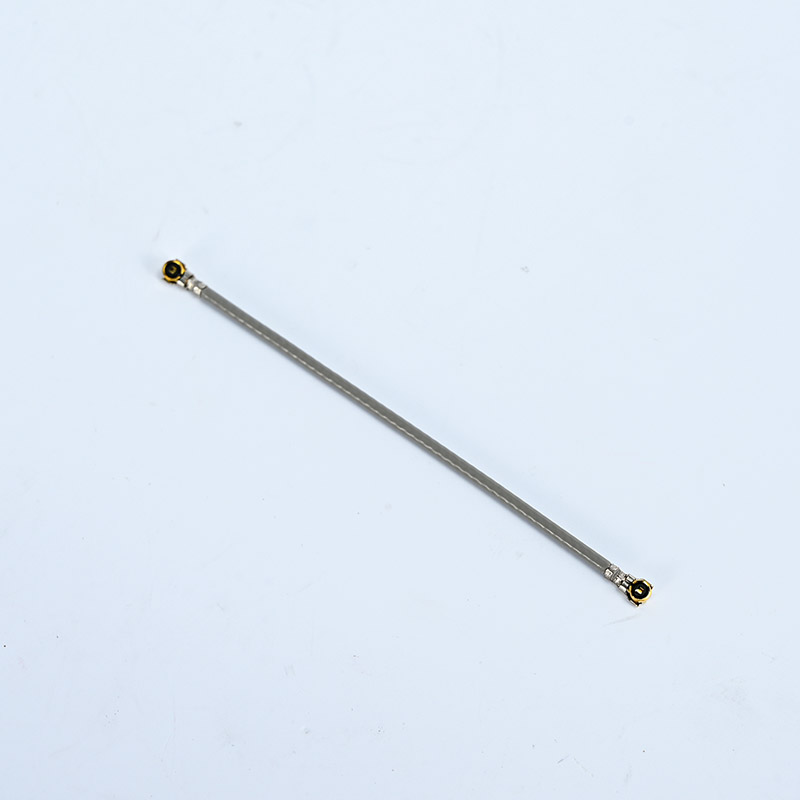Precautions for Using RF Cable Assemblies (1)
2022-02-26
Precautions for Using RF Cable Assemblies (1)
RF cable assemblies are precision components. In order to maintain its reliability, prolong its service life, and ensure that the testing equipment involved has more accurate and reliable measurement values, it is required to use it reasonably, check it frequently, and clean the connector regularly. Unreasonable operation will result in inaccurate test data or certain damage to components and equipment.
1. Regularly check all connector interfaces (especially before each precision test). If any part of the connector interface is found to be damaged, it should be replaced in time to prevent damage to other matching components.
2. Keep the operating environment clean and dust-free, and use dust caps reasonably to prevent foreign objects or any possible contaminants from entering the inside of the connector. If necessary, use dry, oil-free compressed gas to clean the inside (please wear protective glasses to avoid foreign objects getting into your eyes); if it still cannot be cleaned, use a cotton swab moistened with alcohol to clean it, and then let it dry before testing (Do not use hard hand tools or other solvents to clean up, and do not blow with your mouth).
3. When connecting or disassembling the connector, make sure that the center axis of the matching connector is always consistent.
4. When using with the matching connector, be sure to hold the main body of the connector, and only screw the nut for matching, and finally use a suitable torque wrench to tighten the nut.
cable assembly
1. Components should be shipped or stored in their original packaging. The storage temperature should be maintained at -50°C to +80°C and the relative humidity should not exceed 85%.
2. Before using the module, unpack it carefully. During the disassembly and assembly process, it is forbidden to twist the cable. The twisted cable will change the diameter of each layer of the opposite cable, which will ultimately affect the electrical performance.
3. Components must be installed in a location without additional pressure to avoid pinching/squeezing. Do not place anything on the cables and components to avoid internal damage to the cables due to extra stress.
4. Please follow the minimum bending radius of the cable during the connection and use of the component, do not pull/stretch the cable or use it to support extra weight, and do not bend excessively at the connection point between the cable and the connector (ie the end of the component connector). Cable, because there is inevitably a push against the connector during bending, which can kink the cable, which can lead to deterioration of the electrical performance of the assembly and eventual damage in the long term.

RF cable assemblies are precision components. In order to maintain its reliability, prolong its service life, and ensure that the testing equipment involved has more accurate and reliable measurement values, it is required to use it reasonably, check it frequently, and clean the connector regularly. Unreasonable operation will result in inaccurate test data or certain damage to components and equipment.
1. Regularly check all connector interfaces (especially before each precision test). If any part of the connector interface is found to be damaged, it should be replaced in time to prevent damage to other matching components.
2. Keep the operating environment clean and dust-free, and use dust caps reasonably to prevent foreign objects or any possible contaminants from entering the inside of the connector. If necessary, use dry, oil-free compressed gas to clean the inside (please wear protective glasses to avoid foreign objects getting into your eyes); if it still cannot be cleaned, use a cotton swab moistened with alcohol to clean it, and then let it dry before testing (Do not use hard hand tools or other solvents to clean up, and do not blow with your mouth).
3. When connecting or disassembling the connector, make sure that the center axis of the matching connector is always consistent.
4. When using with the matching connector, be sure to hold the main body of the connector, and only screw the nut for matching, and finally use a suitable torque wrench to tighten the nut.
cable assembly
1. Components should be shipped or stored in their original packaging. The storage temperature should be maintained at -50°C to +80°C and the relative humidity should not exceed 85%.
2. Before using the module, unpack it carefully. During the disassembly and assembly process, it is forbidden to twist the cable. The twisted cable will change the diameter of each layer of the opposite cable, which will ultimately affect the electrical performance.
3. Components must be installed in a location without additional pressure to avoid pinching/squeezing. Do not place anything on the cables and components to avoid internal damage to the cables due to extra stress.
4. Please follow the minimum bending radius of the cable during the connection and use of the component, do not pull/stretch the cable or use it to support extra weight, and do not bend excessively at the connection point between the cable and the connector (ie the end of the component connector). Cable, because there is inevitably a push against the connector during bending, which can kink the cable, which can lead to deterioration of the electrical performance of the assembly and eventual damage in the long term.

Previous:Classification of RF Cables


